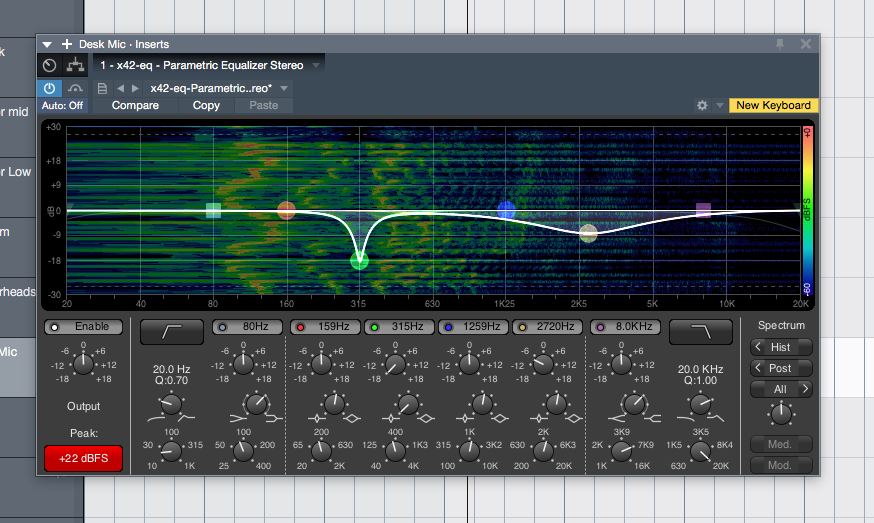Using Vst Plugins In Reaper
REAPER supports MIDI and virtual instruments. This makes it very easy for you to start creating music using your favorite virtual instrument or edit existing MIDI projects.
Oh and if you are running Reaper as your main DAW to run your VSTs through, this is, in my opinion, the best VST for Reaper that you are likely to find for the low, low cost of free. MT Power Drum Kit 2. I tried using several VST plugins, all downloaded from VST4FREE; plugins for piano, drum machines, etc., but I face the same problem for all of them. What I am doing at the moment is plugging my headphones into the synth, so I can hear what I play directly from the synth, while the audio gets recorded in reaper via the VST plugin. I'm new to Reaper and I installed IK Multimedia Ampeg SVX but I can't get Reaper to get the plugin. I've set the VST folder and rescanned the folder many times. I even put the dll's in the Reaper FX folder but it still cannot seem to see the Ampeg SVX plugin. I'm using Vista 64 bit on an HP laptop. Any help would be greatly appreciated. Softwares like Reaper let you use plugins to overlap with the sound of your guitar track. This is similar to using VST plugins to record tracks using a midi keyboard. Watch this video: Using VST plugins in reaper to create and automate guitar rig. This shows how to get best results using plugins as well as overviews some of the ideal settings. Editing JS Plugins in REAPER. In this video I walk you through the process of adding a VST plugin to Reaper so you can get lots of great effects in your track. Here is a nice resource fo. Oh and if you are running Reaper as your main DAW to run your VSTs through, this is, in my opinion, the best VST for Reaper that you are likely to find for the low, low cost of free. MT Power Drum Kit 2.
This tutorial is written for a complete beginner in MIDI music production. At the end of this tutorial, you should learn the following:
a.) Understanding the basics of MIDI rendering.
b.) Adding or installing a virtual instrument.
c.) Composing MIDI music using built-in editor.
d.) Exporting the original MIDI track as WAV file or MP3.
e.) Importing existing MIDI, do some routing and isolation of MIDI tracks.
Some Basics of MIDI Rendering and Import
By its very basic nature, a MIDI file (with file extension .mid) is nothing but digital data stored in your computer.
Unlike a real musical instrument recording done in analog domain (using an audio interface) that is then converted to digital file as WAV; a MIDI file does not contain any information about the real sound of its instruments. What it does contain are musical notes represented in digital form.
As a simple illustration, try the following test:
1.) Launch REAPER.
2.) Download this sample midi file to your Desktop.
3.) Let’s import the MIDI file. Go to Insert — > Media File then locate moonlight_sonata.mid. If you see the MIDI file export options, just click OK.
4.) Now position to the start of the file and hit the PLAY button. You will notice that there is no sound coming out. Why? It is because MIDI is simply a data and is not a recording of a musical instrument.
It needs a virtual instrument that accepts the MIDI data as input that will render it as audio. As a diagram:
MIDI — > Virtual Instrument — > Audio
Installing Virtual Instrument

To play a MIDI file, you need to add a virtual instrument appropriate for the music. Tapestop effect vst free. In the above example, since Moonlight Sonata by Beethoven is a piano sonata piece. You need a piano virtual instrument.
There are lots of free VST virtual instrument in the Internet particularly for piano. Do not forget to check the integrity of the installer and developer before using them. Let’s have an example:
1.) Supposing you will use mda Piano V.1.0 which can be downloaded here.
2.) Download the exe file to your desktop and install it (by double clicking). By default, it will be installed in Steinberg VST plug-in directory.
3.) Finally, click Install.
4.) Click Close.
5.) Launch REAPER and then go to File – New Project.
6.) Let’s insert the mda Piano virtual instrument. Go to Track — > Insert Virtual Instrument on New Track.
7.) You will then see several installed VST virtual instruments. Select or highlight mda Piano.
install VST Live vst amplifier plugins.
8.) Simply use its default settings then close the FX dialog box. Take note that it is set to record mode by default (record button enabled to red), this is normal.
9.) Now it’s the time to import the MIDI file. Go to Insert — > Media File and locate the test MIDI file moonlight_sonata.mid; in the “Midi file Import Options” just click OK.

Adding Vst To Reaper
This is the screenshot of the virtual instrument loaded with the MIDI input file:
10.) Now hit the PLAY button again and switch the volume of your audio interface/soundcard to around 50% maximum, you should now be able to listen to the MIDI sound output.